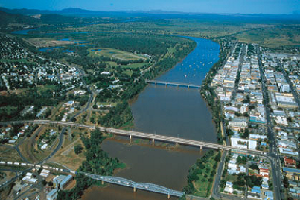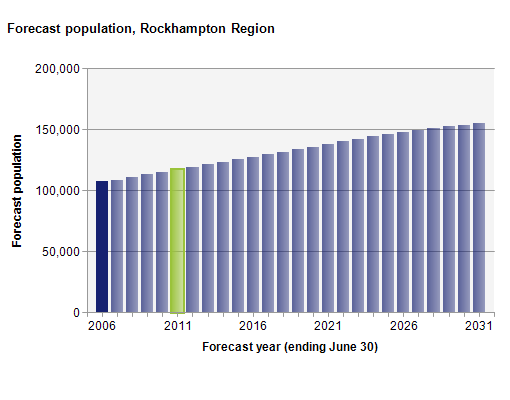.id recently completed population forecasts to 2031 for the Rockhampton Region in Queensland. Funded by the Rockhampton Regional Council, the forecasts are designed to inform Council, community groups, investors, business, students and the general public about what is driving change in the region and what the future population will look like.

How will Rockhampton’s population grow?
The Rockhampton region population forecasts are delivered online as an interactive forecast.id website that you can explore at your leisure, but here are some highlights identified by Senior Forecaster, Johnny Barnard:
- Rockhampton Region is located in Central Queensland on the Tropic of Capricorn, around 550 kilometres north of Brisbane. The Region has two major population centres, the city of Rockhampton and immediate surrounds, with around 75,000 residents and the coastal strip from Yeppoon south to Zilzie with around 30,000 residents (also known as the Capricorn Coast). Settlement is relatively sparse outside of these centres with the exception of the historic mining area of Mount Morgan.
- The population is forecast to grow steadily by 37,435 people between 2011 and 2031 to a total of 154,748.
- Most of the growth is occurring along the Coast and in the city of Rockhampton
- In town, most of the growth is happening on the fringe to the north, as well as in Gracemere to the south west which is taking most of the fringe demand and expected to continue doing so. There is very little infill development occurring in existing suburbs although there has been some growth in apartment-style living in Central Rockhampton.
- The coastal growth is concentrated in the strip between Yeppoon to Zilzie. It ranges from resort-style developments around Zilzie to classic broad hectare development.
- Different parts of the region attract different housing markets. The fringe developments attract both young and mature families, whereas retirees are a big market for the coast and rural areas are losing school leavers as they seek employment and education opportunities in larger centres.

The population outcomes differ significantly across the local government area, so .id produces forecasts for each of the 26 identified communities in Rockhampton and builds these into the overall forecast for the region. The detailed small area forecasts are available from the website.
How will Council and the community benefit?
This public resource will be available via Rockhampton Regional Council website to all staff and the community. It will assist the council with planning for service delivery, asset management, housing policies, funding submissions, investment attraction and advocacy work. It is also designed to inform community groups, investors, business, students and the general public. The information will be reviewed every 18 months.
Rhonda Noyes, Operations Manager Community Development for Rockhampton Regional Council explains how the forecasts will be used:
“Council is currently undertaking intensive planning with the Long Term Community Plan process underway with the BE HEARD campaign. The information contained within forecast provides Council and all sectors of the Community with an independent set of data to feed into the analysis of key trends and drivers and long term priorities for the Region. This coupled with other research and community input puts Council and local organisations in a good position to make better decisions around what is important for the Region’s future.
Knowing how the demographics of the community will change over time is important not only for long term planning but also for medium and shorter term planning, and resource allocation. It also helps to overcome the syndrome of the ‘squeaky wheel’, as data is at the finger tips of Council and the Community to help determine whether there is a legitimate need or not for the allocation of resources into particular areas / initiatives.
The forecast product is additionally a very easy tool to navigate, with data easy utilised to feed into community research, Council report writing, and submissions to funding bodies and other organisations. It compliments the other online tools of profile.id and atlas.id and makes number crunching and sense making of statistical information so much easier and cost effective.
The fact that it is available for community use is another important factor as local organisations can also make good use of the information to help them with their planning and grant applications,” she said.
Rockhampton Regional Council also subscribes to .id’s community profile and social atlas – both available from their website – to round out the picture and tell the story of who lives in Rocky and how they live.
If you enjoyed this article, sign up to get updates via email or twitter (above), and feel free to share it.











